Service dogs doing their jobs on public lands
Every service dog is trained to do work or perform tasks for a specific individual with a disability. Service dogs can be any breed and any size. One such hero, Zoe, has had extensive training to accommodate a host of issues as Zachary Ormsby’s service dog.
Zachary, Field Manager for the Bureau of Land Management’s California Central Coast Field Office, became disabled in 2014 after encountering a wild boar and falling down a steep mountain slope. Due to his injuries, both physical and psychological, Zoe received extensive training to assist him. Her tasks include seizure intervention and alerts during periods of high stress. She’s also trained in wildlife aversion, alerting to rattlesnakes, clearing trails, running perimeters, and has even driven bears up trees. Most of Zoe’s work is conducted off leash and she typically wears her service dog vest, complete with BLM patches.

Zachary and Zoe work to promote public access to our public lands for everyone. One such public lands enthusiast is Tia Henry, a 20-year-old in the prime of her life, who played basketball in college and is studying to be a special education teacher. Due to heart-related complications from Covid, she wasn’t sure she’d be able to hike anymore—until she got Ruger. Ruger, a year-old dalmatian, alerts Tia when her heartrate increases too quickly, laying on her legs to regulate her blood flow. Like Zoe, Ruger is rattlesnake trained. Both dogs have alerted their owners to snakes in the field. Having a service dog has made a world of difference in Zachary’s and Tia’s lives.
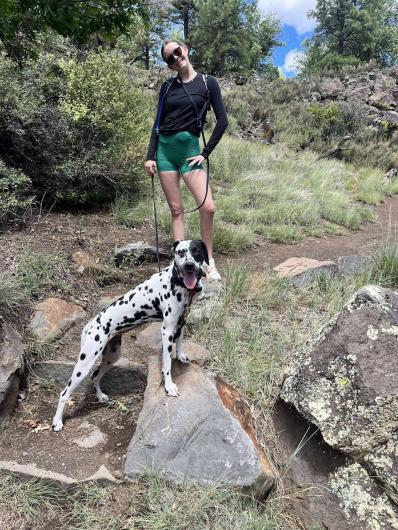
Tia used to lose consciousness several times a day and wake up disoriented and scared. Now, Ruger alerts her before she faints, allowing her to sit down.
“Ruger’s vest has instructions explaining what to do and what not to do,” said Tia. “Don’t separate us. Don’t call 911. Give us space.”
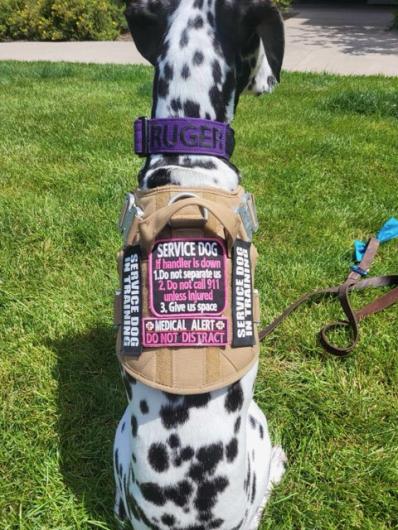
If Tia does faint, Ruger stays right next to her, so she knows she’s safe when she wakes up. Ruger’s presence also alleviates the fears of Tia’s friends.
“The toughest thing is when we run into people with untrained, off-leash dogs that run up to us, barking. I always have to be on guard for our safety,” she said. “Or when kids try to pet her without asking. Ruger doesn’t wear her vest when it’s hot out. I tell them nicely but firmly that she’s a service dog and she’s working, so please don’t pet her.”
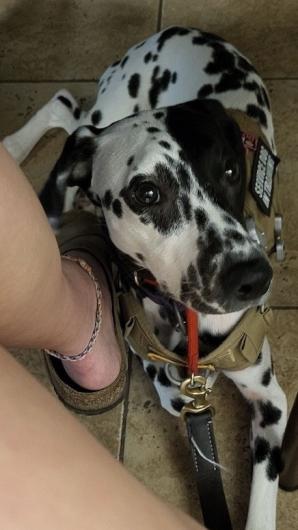
On or off leash, with or without a service dog vest, both dogs are compliant with the recently updated Section 504 of the Rehabilitation Act for service animals in Federal facilities and buildings. The May 2024 revision ensures consistency with the Americans with Disabilities Act, which covers state, local, and some private buildings and facilities.
Although Zachary and Zoe have been together longer than Tia and Ruger, Zachary says he’s still learning, especially out in the field.
“So many opportunities to learn when recreating outdoors. There’s definitely been a learning curve about my post-accident capacities and comfort levels,” said Zachary. “It’s a lesson in evolution and that’s a shared experience with most of the visitors we encounter on our public lands.”
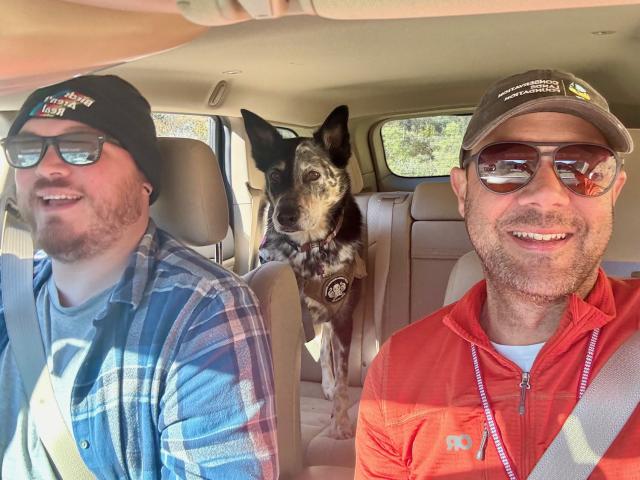
Zachary began his Federal career in BLM Headquarters with a reasonable accommodation for a service dog. When he went to work for BLM California in late 2022, they established a new reasonable accommodation (each role change requires a new accommodation). Zoe is the first service animal for BLM California under a reasonable accommodation. On their first day, BLM staff presented Zoe with a BLM patch for her vest to welcome them to the office.
“Zoe and Zachary are trail blazers,” said Philip Oviatt, Public Affairs Officer for the California Central California District Office. “It’s amazing watching them in the field!”
“It’s important to me to interact with others to increase awareness and understanding of the different tasks a service dog may provide,” offers Zachary. “The information exchange goes both ways. I often learn from more experienced dog owners, too.”
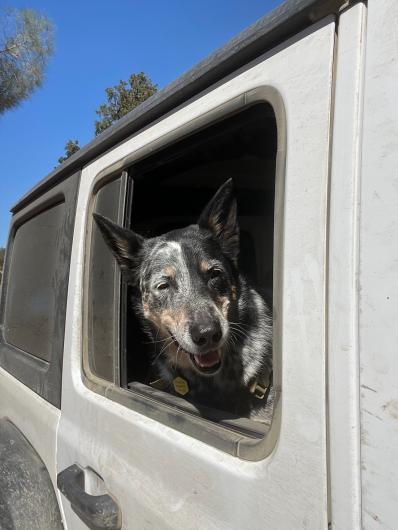
“If there’s one thing I’d like to leave with people, it’s that although Ruger is still a puppy, she’s a service dog in training, like her vest says,” says Tia. “Like a human, she may make mistakes, but we’re a team. I control her and she helps me. Even though I had a life-changing health event, because of Ruger, I can continue to live my life to the fullest!”
As we celebrate National Service Dog Month, we celebrate Ruger, Zoe, and others who enable their handlers to work, go to school, and recreate on public lands in ways they couldn’t otherwise do.
Know Before You Go
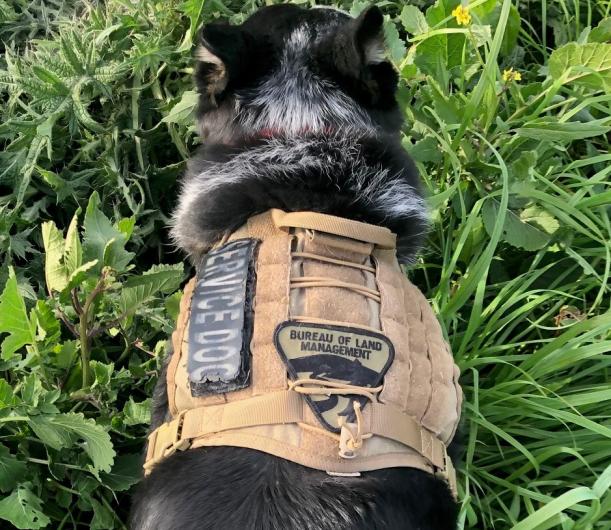
When you take your dog with you to recreate on public lands, whether they’re a pet, emotional support animal, service animal, or something else, you should be prepared. You can check the BLM visit page for the site, call the local BLM office, or look at the standard safety tips and advice offered on the BLM’s Know Before You Go page.
Tia Henry and Zachary Ormsby gave us a few more tips to consider:
- Bring plenty of water for you and your dog.
-
Bring bags to collect and remove your dog’s waste, even in remote areas, as dog waste can transmit parasites and infectious diseases.
-
Be aware that some people are scared of dogs.
-
Be aware of extreme temperatures (in the air or on the surface).
-
Be aware of rugged surfaces or conditions, e.g., sharp rocks or vegetation, steep slopes.
-
Be aware of wildlife hazards, e.g., venomous snakes, scorpions, bears, wolves, etc.
-
Watch where your dog goes, they can become a vector for poison oak/poison ivy, transferring the oils to humans.
-
Check your dog for fleas and ticks before they get back in the vehicle.
-
Always ask for permission to approach or pet a dog.
-
Be mindful of leash laws and others around you when recreating on public lands.
Cathy Humphrey, Writer/Editor, Experienced Services Program
Related Stories
- How fuel breaks helped wildfire agencies contain the Grove 2 Fire in eastern San Diego County
- National Conservation Lands: 25 years – and eons – in the making
- BLM publishes interactive web map displaying access to public lands
- BLM announces 2025 fee-free days
- Fourth Restoration Landscape film highlights Cosumnes Watershed fire and fuels reduction efforts
